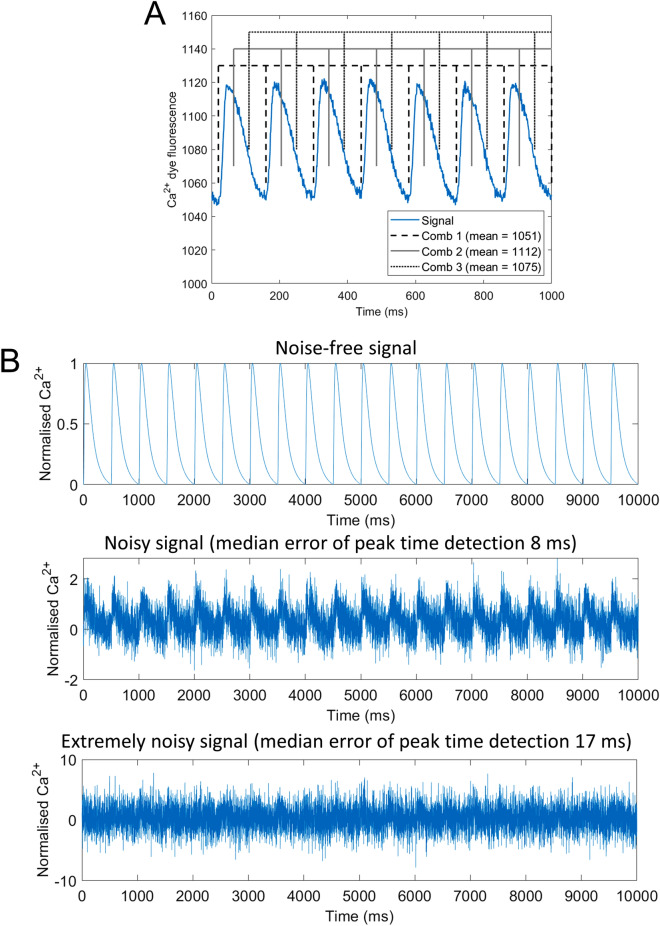Figure 2.
The comb algorithm and its noise-resistance. (A) Illustration of comb positioning in a recording of calcium transients in rat heart paced every 140 ms. Three distinct positions of comb are shown, with the average value under comb teeth being given in the legend. The dashed comb has the lowest average value, being the best comb position for extraction of signal minima. (B) An example of the trace of 20 calcium transients (generated using the computer model ToR-ORd16) with no added noise (top), heavy noise (center), and an extremely high amount of noise added (bottom). COSMAS detected calcium transient peak times with a median error of only 8 ms for heavily noisy signal and only 17 ms in the extremely noisy signal, demonstrating the robustness of the algorithm to noise. Further quantitative data on noise-resistance versus the number of beats in a recording are given in Supplementary Figure 1.

